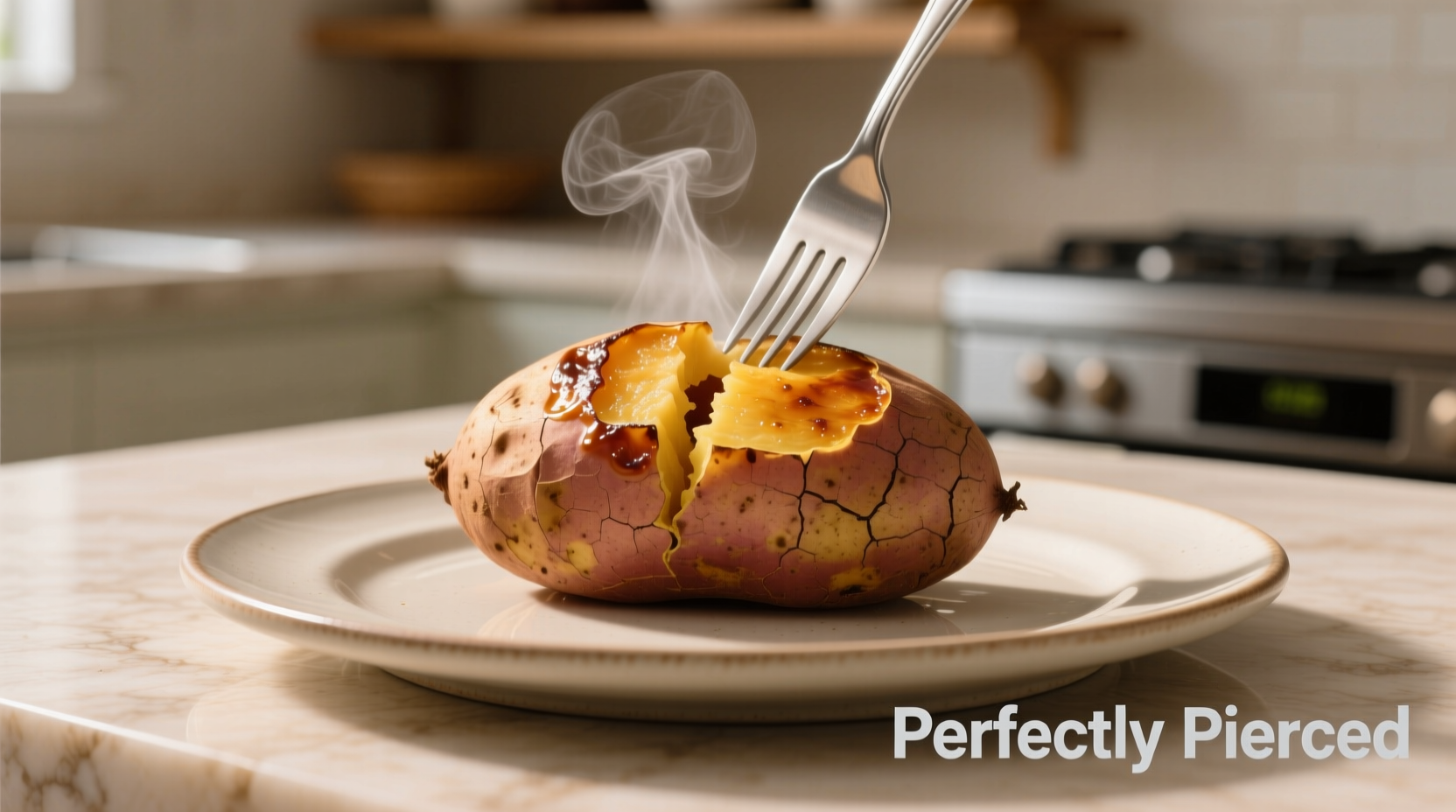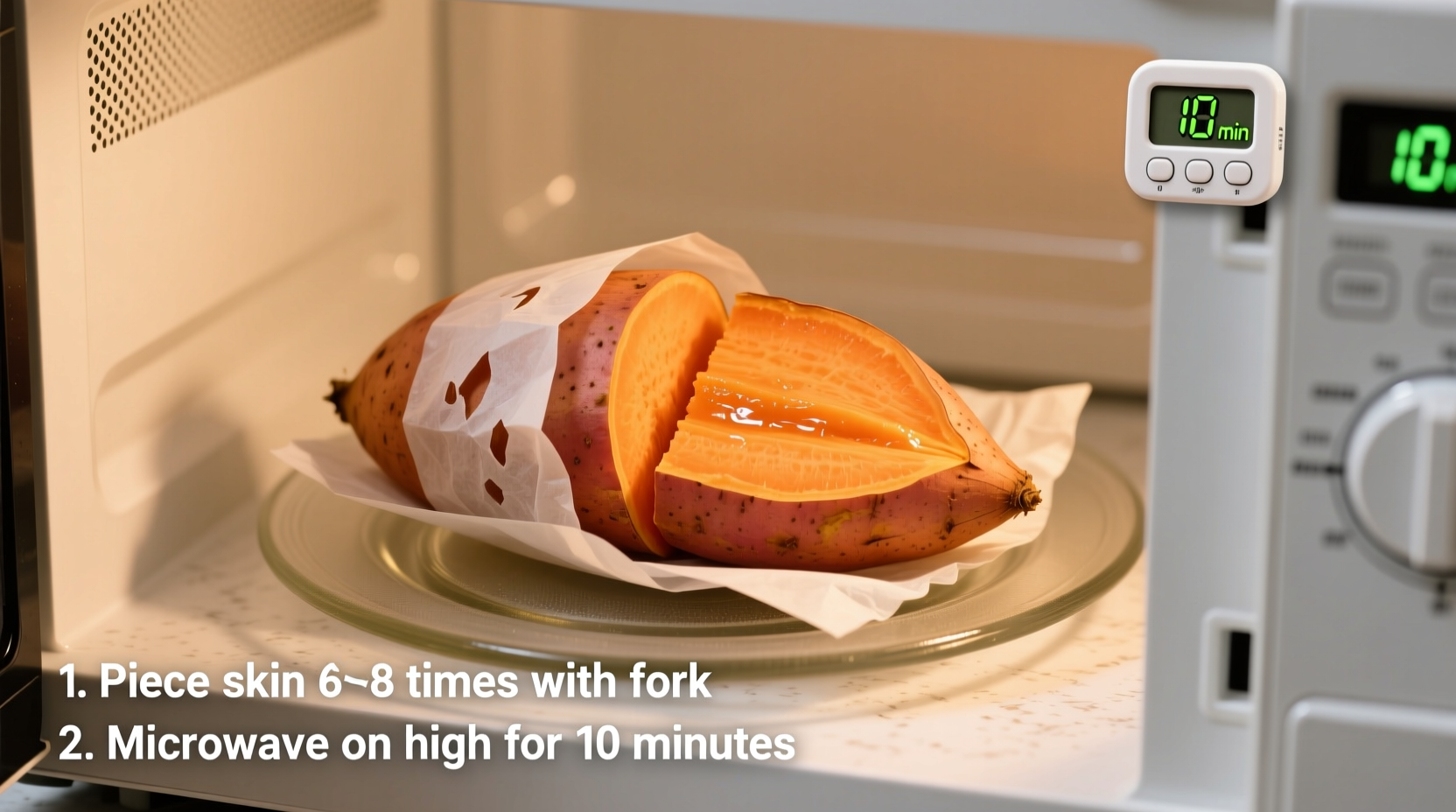Craving a perfectly cooked sweet potato but short on time? The microwave method delivers restaurant-quality results in minutes, not hours. This guide reveals the precise technique professional chefs use to achieve fluffy interiors and tender skins every time—without drying out your sweet potato or risking kitchen mishaps.
Why Microwave Beats Oven for Sweet Potatoes
While traditional baking takes 45-60 minutes, microwaving cuts cooking time by 80% while preserving more nutrients. According to USDA food safety guidelines, microwaving actually retains higher levels of vitamin C and beta-carotene compared to prolonged oven baking due to reduced heat exposure time (USDA Food Safety and Inspection Service).
| Cooking Method | Time Required | Nutrient Retention | Texture Result |
|---|---|---|---|
| Microwave | 5-8 minutes | 90%+ vitamins preserved | Fluffy interior, tender skin |
| Oven Baking | 45-60 minutes | 70-80% vitamins preserved | Crispy skin, dense interior |
Step-by-Step Microwave Sweet Potato Guide
Preparation: The Critical First Step
Skipping this step risks explosive results. Always:
- Wash sweet potato thoroughly under running water
- Dry completely with clean towel
- Pierce skin 4-5 times deeply with fork (essential for steam release)
- Never microwave un-pierced sweet potatoes—this creates dangerous pressure buildup

Cooking: Precision Timing Matters
Follow these exact timing guidelines based on sweet potato weight:
- Small (4-6 oz): 4-5 minutes on high
- Medium (6-8 oz): 5-6 minutes on high
- Large (8-10 oz): 6-8 minutes on high
Flip the sweet potato halfway through cooking. This ensures even heat distribution—microwaves create hot spots that can leave portions undercooked. For multiple sweet potatoes, add 2 minutes per additional potato and arrange them in a circle with space between each.
Checking Doneness: The Fork Test
Insert a fork into the thickest part:
- Perfectly cooked: Fork slides in with slight resistance
- Undercooked: Fork meets significant resistance
- Overcooked: Fork slides in too easily, flesh appears watery
If undercooked, continue microwaving in 30-second increments. Never exceed recommended times—overcooking causes nutrient loss and texture degradation.
Avoid These Common Microwave Mistakes
Food science reveals why these errors compromise results:
- Skipping the resting period: Let cooked sweet potatoes rest 2 minutes. This allows residual heat to finish cooking the center evenly through carryover cooking.
- Using plastic wrap: Creates steam burns when removed. Use a microwave-safe plate cover instead.
- Overcrowding the microwave: Multiple sweet potatoes need space for proper air circulation. Cook in batches if necessary.
Nutritional Benefits of Properly Cooked Sweet Potatoes
Microwaving preserves maximum nutrition when done correctly. A medium sweet potato provides:
- 400% of daily vitamin A needs (as beta-carotene)
- 30% of vitamin C requirements
- Significant potassium and fiber content
The natural sugars in sweet potatoes caramelize at 140°F (60°C), creating that signature sweet flavor. Microwaving reaches this temperature threshold faster than oven baking, enhancing sweetness while minimizing nutrient degradation (National Center for Biotechnology Information).
Perfect Serving Suggestions
Maximize flavor with these chef-recommended pairings:
- Classic preparation: Slice open, fluff with fork, add pinch of sea salt
- Protein boost: Top with black beans and Greek yogurt
- Sweet option: Drizzle with 1 tsp pure maple syrup and cinnamon
For restaurant-quality presentation, slice the cooked sweet potato lengthwise, gently press ends toward center to open, then add toppings in the natural crevice.











 浙公网安备
33010002000092号
浙公网安备
33010002000092号 浙B2-20120091-4
浙B2-20120091-4